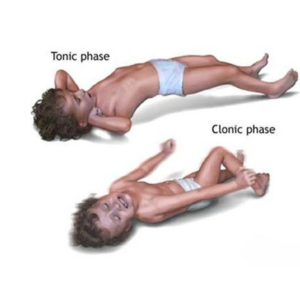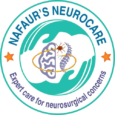Sensory Dysfunction
Sensory Dysfunction
Sensory dysfunction in children refers to abnormal processing of sensory input by the nervous system. It can affect touch, sight, hearing, taste, smell, proprioception (body awareness), and vestibular balance, leading to either hypersensitivity, hyposensitivity, or sensory-seeking behaviors. Sensory issues can appear independently or in association with neurological conditions such as autism, cerebral palsy, brain malformations, spinal cord disorders, or trauma. In Bangladesh, many children with sensory challenges are undermisdiagnosed or misunderstood, often labeled as “slow” or “difficult.” With increasing awareness and early neurological intervention, children with sensory dysfunction can significantly improve their developmental outcomes and social integration. Dr. Md. Nafaur Rahman, a pioneer in pediatric neurosurgery in Bangladesh, offers clinical evaluation, neuroimaging, and surgical guidance for sensory processing issues rooted in structural or functional brain/spine abnormalities. 🌍 Sensory Dysfunction in Bangladesh – An Emerging Concern In the Bangladeshi context, increasing awareness around autism spectrum disorders (ASD) and neurodevelopmental delays has highlighted the importance of sensory health. However: Many children are not assessed for neuroanatomical causes School systems often lack resources to accommodate sensory-sensitive children Parents may be unaware that brain or spinal cord malformations can affect sensory integration Specialized centers offering integrated sensory-neurosurgical evaluation are rare outside Dhaka With comprehensive neurological care, including neurosurgical input, children with sensory dysfunction can gain better control over their bodies, emotions, and environment. ⚠️ Symptoms of Sensory Dysfunction in Children ✋ Overreaction to touch, textures, or noise (sensory defensiveness) 🚫 Avoidance of light, loud sounds, crowded spaces 🔁 Repetitive spinning, rocking, or head banging 🤲 Seeking pressure or deep contact constantly ❌ Poor balance, clumsy walking, or frequent falls ✍️ Difficulty with handwriting or fine motor coordination 🧍 Abnormal posture or gait (possible proprioceptive dysfunction) 🗣️ Delayed speech and social interaction (especially in ASD) “When a child constantly avoids noise, touch, or movement, it's not just behavior—it may be a sensory processing issue rooted in the nervous system.” — Dr. Md. Nafaur Rahman 🔍 Causes of Sensory Dysfunction (Neurological Perspective) Sensory disorders can arise from multiple neurological and structural conditions: Perinatal brain injury (hypoxic-ischemic encephalopathy) Autism Spectrum Disorder (ASD) Cerebral Palsy – Especially with spasticity or ataxia Chiari Malformation – Can alter balance and sensory processing Tethered Cord Syndrome – Affects lower limb and bladder sensation Cortical Dysplasia or Brain Malformations Spinal Cord Tumors or Syringomyelia Peripheral Nerve Disorders or Sensory Neuropathies Traumatic Brain Injury during birth or accidents Hydrocephalus – May affect proprioception and visual processing 🧪 Diagnostic Approaches by Dr. Nafaur Rahman As a neurosurgeon, Dr. Nafaur Rahman conducts a detailed neurological workup, including: 🧠 MRI of Brain & Spine – To assess for malformations, Chiari, or syrinx 🧲 Neurophysiology (EMG/NCS, SEP, VEP) – To test sensory pathways 📋 Behavioral observation and sensory profiling 🧑⚕️ Coordination with pediatric neurologists and developmental specialists 🧪 Genetic/metabolic testing if associated with syndromes 🛠️ Treatment of Sensory Dysfunction – Neurosurgical and Multidisciplinary Care 1. 🧒 Non-Surgical Management Occupational Therapy (OT) – For sensory integration and coordination Physiotherapy – Especially in children with proprioceptive or vestibular issues Speech Therapy – For children with oral sensory processing challenges Behavioral Therapy – For sensory-seeking or avoidant behaviors Parental training – Sensory diets, environmental control, and routine structuring 2. 🧠 Neurosurgical Intervention While sensory issues are often managed conservatively, surgical intervention is indicated when structural brain or spinal cord pathology is identified: a) Chiari Decompression Surgery For children with Chiari malformation affecting balance, proprioception, or causing sensory hypersensitivity b) Tethered Cord Release In children with lumbosacral sensory deficits, toe walking, or bladder dysfunction c) Hydrocephalus Management (VP Shunt, ETV) Improves cognitive and sensory awareness by relieving pressure d) Tumor or Syrinx Decompression Especially in children with sudden-onset or progressive sensory deficits 🔁 Long-Term Care and Parental Guidance Sensory dysfunction requires ongoing support and reassessment. Dr. Nafaur ensures long-term tracking with: 🧾 Regular neurological reviews 🧠 Sensory integration progress tracking 📈 School and educational support plans 🧑👩👧 Family counseling to empower home-based care 🤝 Collaboration with child psychologists and therapists 🧑🍼 Untreated Sensory Dysfunction Can Lead To: ❌ Learning delays and school refusal 🔁 Aggression, self-injury, or meltdowns 😔 Social withdrawal or anxiety 📉 Reduced independence in daily activities 🧑🦽 Motor delays and posture issues in neurogenic causes 👨⚕️ Why Choose Dr. Md. Nafaur Rahman? 🧠 Leading pediatric neurosurgeon with expertise in brain and spine-related sensory disorders 🏥 Based at NINS, Bangladesh’s national-level neuroscience facility 🧒 Comprehensive care through Bangladesh Paediatric Neurocare Centre ✅ Offers surgical treatment for Chiari malformation, tethered cord, spinal tumors, and hydrocephalus 🤝 Integrates care with therapists, child psychologists, and special educators 📞 Take the First Step Toward Sensory Relief and Development Dr. Md. Nafaur Rahman Assistant Professor, Pediatric Neurosurgery, NINS Chief Consultant, Bangladesh Paediatric Neurocare Centre 📱 For Serial/Appointments: 📞 01912988182 | 📞 01607033535 🌐 Visit: www.neurosurgeonnafaur.com


